Embarking on a journey through the most stunning peninsula in the entire Adriatic, exploring the best cities, natural parks, villages, restaurants, local cuisine, and the allure that makes Istria a must-visit destination for all travel enthusiasts.
If you’ve been to Croatia, chances are you haven’t experienced Istria. However, you’ve likely heard rave reviews about these places if you’ve delved into Croatian travel. That’s because Istria is Croatia’s most renowned peninsula, a destination that’s a must-visit in every aspect.
Whether your priority is beach relaxation, romantic strolls through medieval towns, rural tourism with wine, Mediterranean cuisine, or local truffles, Istria has it all. You’ve probably heard about the fantastically beautiful Pula, Rovinj, or Poreč. I’ll add a dozen more fantastic places that annually attract travelers seeking quality leisure at reasonable prices.
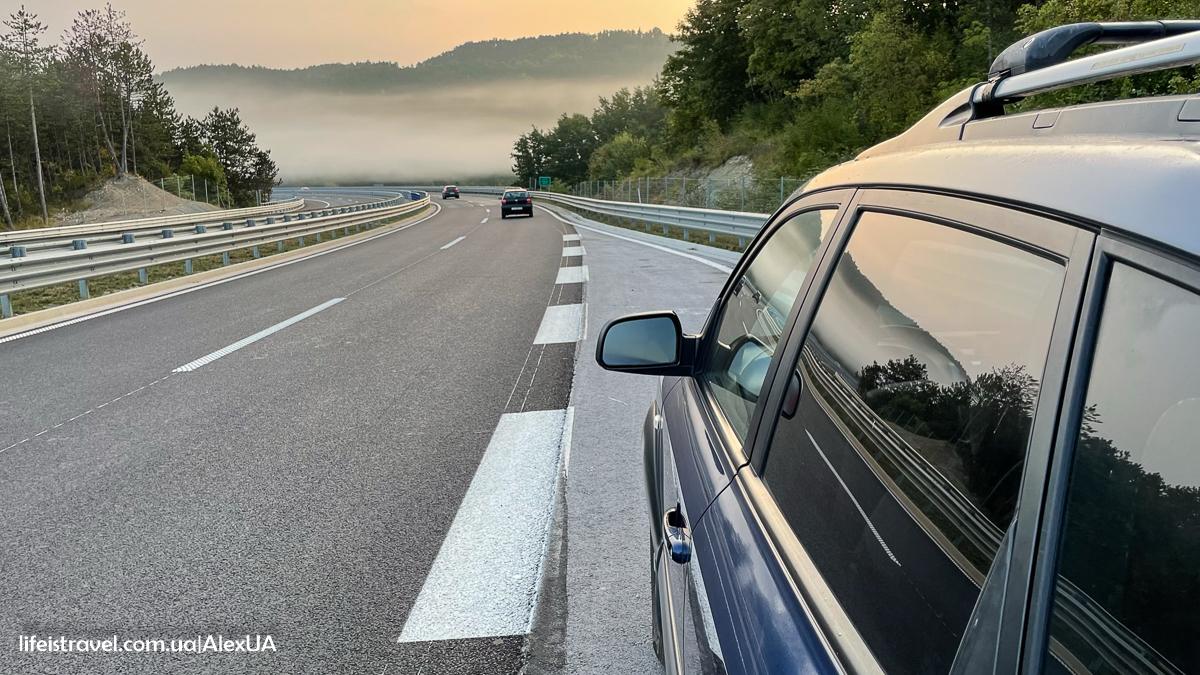
I’ll provide tips on booking hotels or apartments, share where to find delicious food, and suggest other activities in this wonderful place. One undeniable advantage of Istria is that all attractions, the best beaches, and natural sites are relatively compact, facilitating easy logistics and route planning.
Our journey to Istria began after exploring the entire coastline around Dubrovnik, the Makarska Riviera, and the main Croatian islands. We always traveled by car because it allows you to see more and be independent.
If you didn’t bring your car, renting one is easy at Split, Pula, or Dubrovnik airports. The nearest airports are Pula on the Istrian peninsula, Zagreb’s airport (a couple of hours away), and Split’s airport if you decide to extend your trip and make Istria part of your Croatian route.
Useful tip! The only way to explore all the fascinating places and attractions in Istria is with your own or a rented car.
Best time to visit Istria: from May to the first half of October. During this period, the coastal temperatures are a comfortable 25-30 degrees Celsius.
Istria’s coastline spans 540 kilometers.
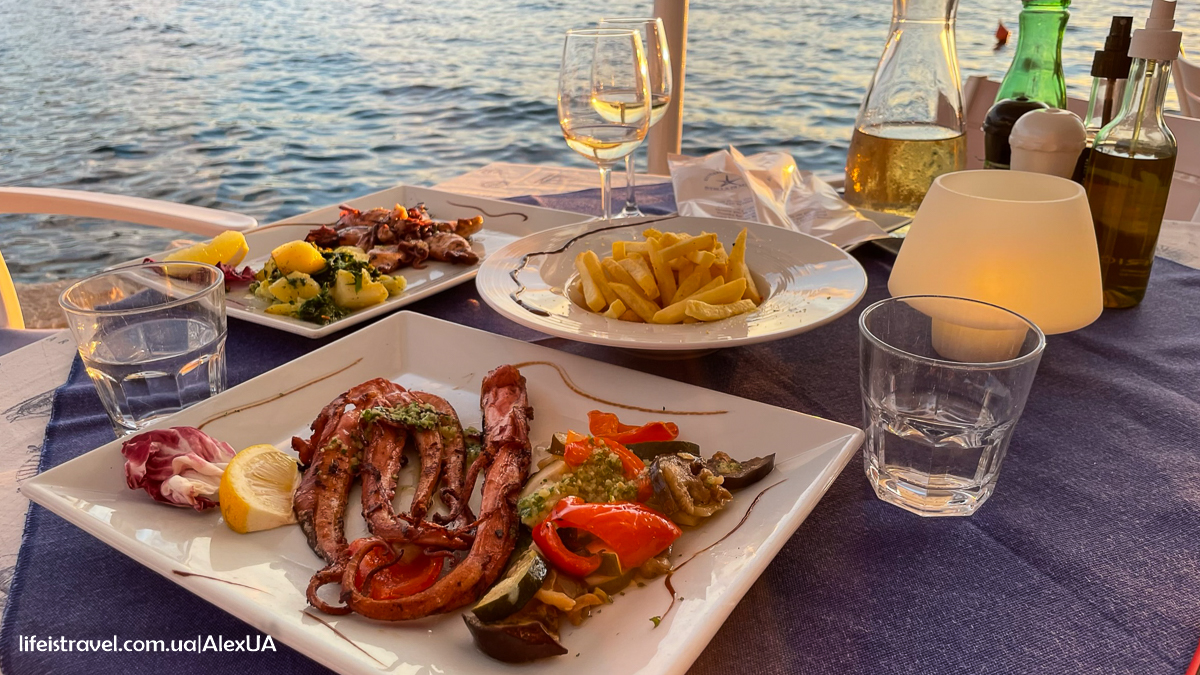
Istria: General Information
Istria is a peninsula bordering Slovenia to the north and the Kvarner Gulf in Croatia to the west. Its most famous landmark is the ancient amphitheater in the coastal town of Pula. Apart from well-known romantic and beautiful medieval towns like Rovinj, Poreč, and Pula, Istria boasts over 30 natural parks and reserves with caves and waterfalls, as well as picturesque villages like Hum or Motovun.
The climate in Istria is mild Mediterranean, with the sun shining most of the year. Considering the climate, the abundance of interesting places, and the convenient logistics and location, Istria is the most popular summer destination for Europeans, Brits, and Americans.
The nearest airports are in Pula and Rijeka. The most popular way to travel in Croatia is by car or camper.
We also noticed that pet-friendly travel is particularly popular in Istria. Many hotels and apartments welcome guests with pets. Along the coastline, there are enough dog-friendly beaches, indicated by “Dog Friendly Beach” signs.

Pula
Regardless of where you stay, starting your journey from this port city in the southern part of the peninsula is a must. Pula’s iconic symbol and Istria’s landmark is the Roman amphitheater in the old town. Besides that, the city boasts a beautiful old center with charming city squares. One of them is perfect for lunch and treating yourself to a glass of local wine.
The surroundings of Pula offer plenty of interesting activities. Naturally, during summer, most people are interested in beaches, and Pula has several. The best ones are on both sides of the city port. Pula’s beaches are considered some of the best in the region.
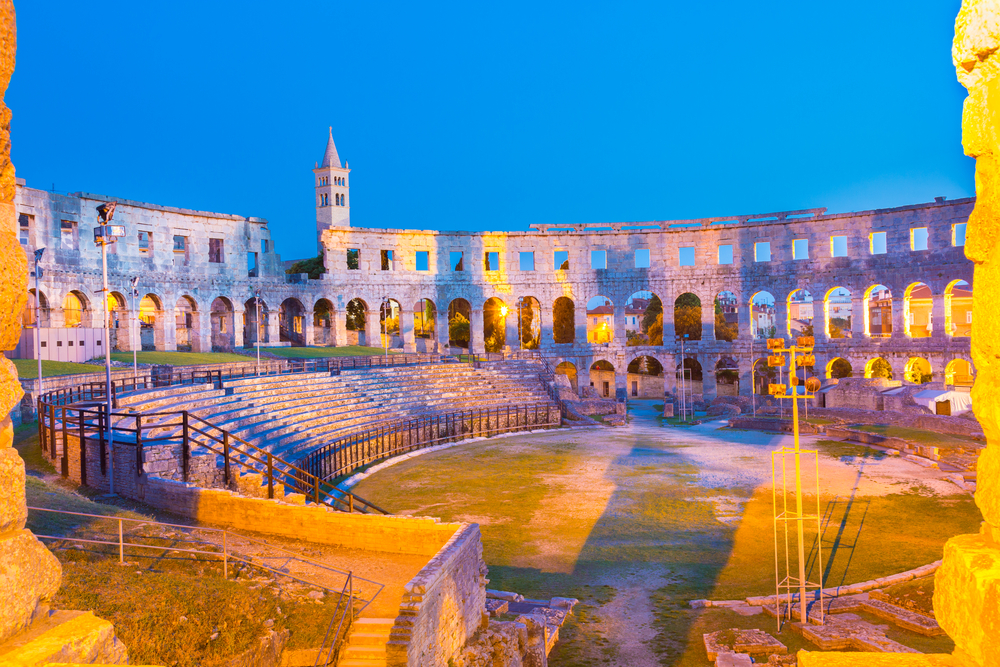
Where to stay in Pula?
If you plan to spend 1-2 nights or more in Pula, which seems perfectly reasonable, I recommend Park Plaza Arena Pula. The hotel is located near the famous Hawaii beach. It’s 5 km to the historic center.
If strolling through the old town is your priority, I recommend Apartment Eda, a 5-minute walk from the historical center.
Rovinj
In my opinion, Rovinj is the most beautiful town in Istria. It has a bit of an Italian feel, is incredibly romantic, and is simply designed for relaxation and walks. The city center, especially in the evening, the view of the city from the old port, and the marina are impressive. Around Rovinj, there are many walking trails and several worthy beaches.
The highest point in the city is the Church of St. Euphemia. This is where you get the most breathtaking views of the city and the Adriatic Sea.
Rovinj boasts an incredible concentration of cozy and atmospheric cafes and restaurants that truly capture the city’s vibe.
How many days to spend in Rovinj is up to you. We weren’t bored for 5 days, but we also explored the surrounding areas extensively.
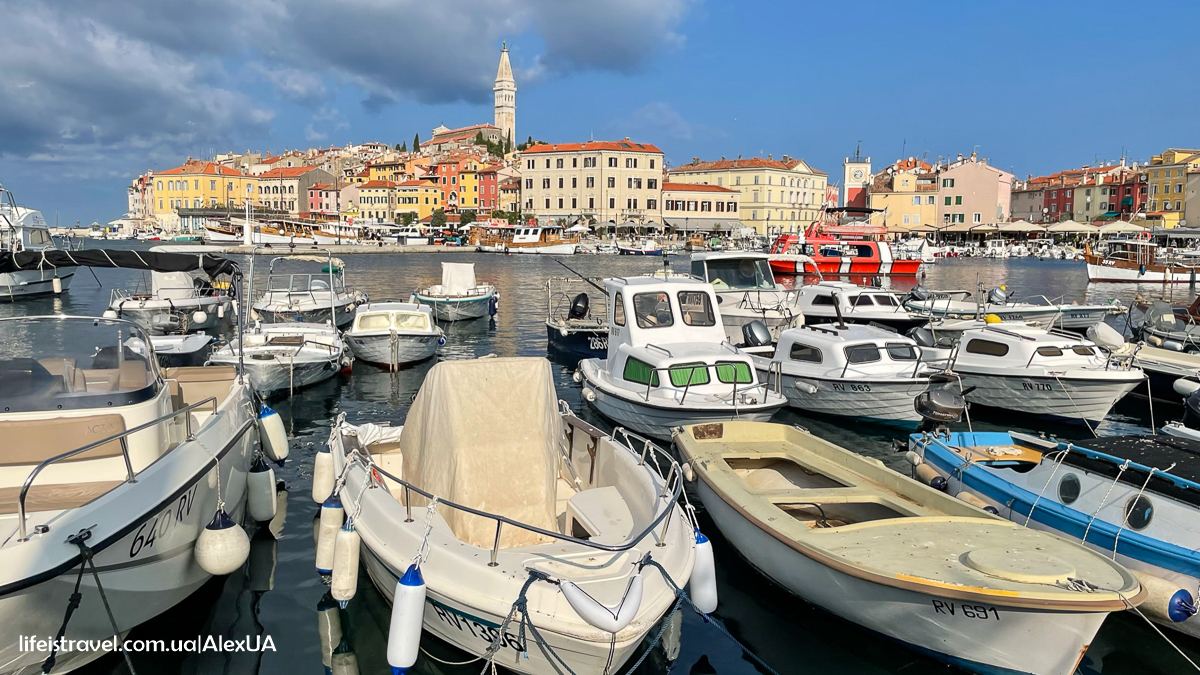
Where to stay in Rovinj?
There are many accommodation options here, from luxurious 5-star hotels in a pine forest by the sea to cozy apartments 10-15 minutes’ walk from the old town. It all depends on your budget and preferred style of vacation.
I can recommend an excellent place – Monte Mulini hotel, with a cozy beach nearby and within easy reach of the old town.
For a budget-friendly option, consider Apartments & Rooms Chiara, not far from the old town and beaches. It’s comfortable, cozy, and reasonably priced.
If comfortable seaside relaxation with excursions to the center and trips to different beaches is your priority, I recommend the first option.
If budget, comfort, and exploring the city and surrounding areas with visits to various beaches are your focus, confidently choose the second option.
Poreč
Poreč is another major gem in Istria’s crown. It’s a must-visit or a stop for a few days. The city center boasts architectural landmarks with roots dating back to the Roman Empire. The central attraction is the 6th-century Basilica of Euphrasius, listed as a UNESCO World Heritage site.
Like other places in Istria, Poreč and its surroundings offer plenty of options for beach lovers.
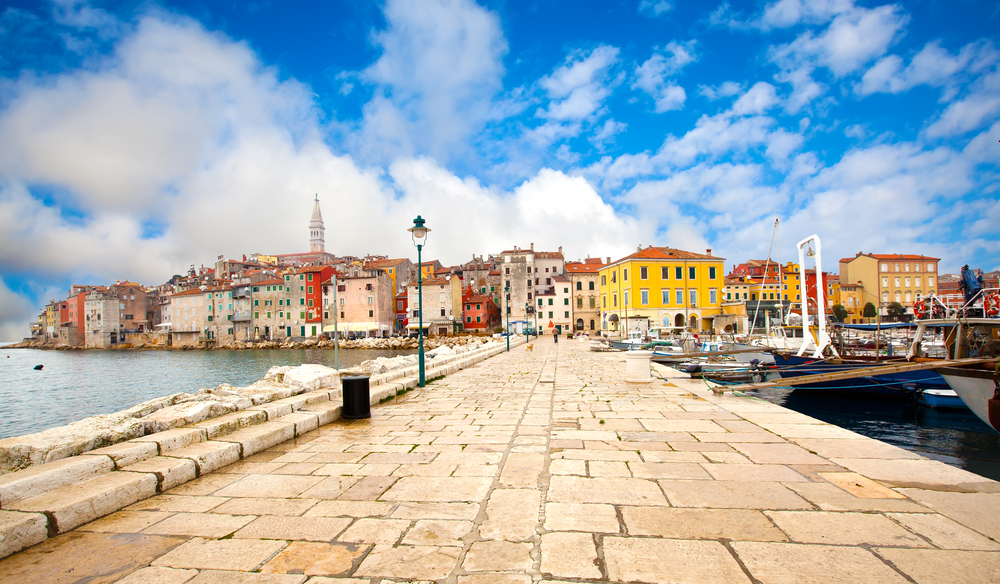
Where to Stay in Poreč?
For a bit more comfort in a beautiful location a few kilometers from the center, I recommend Villas Park Plava Laguna.
For a budget-friendly option with sufficient comfort, closer to the city center, consider Guesthouse Casa Nova, with a terrace in the inner courtyard and parking space. Convenient access and location.
Motovun
If you love the medieval aesthetics of small hilltop fortresses and delicious food, Motovun is a must-visit. Motovun is a fortress and town on a hill, built in the 12-13th centuries, sitting at 200-300 meters above sea level, surrounded by vineyards and greenery. It’s about 30 km from the Adriatic Sea.
The historical fortress walls and old cobblestone streets are the main attractions. This place reminded us of Italy’s Tuscany region.
In the surroundings of Motovun, you’ll find the famous Istrian truffle — white and black. Truffles are a mandatory part of the local cuisine. The most famous restaurant serving truffle dishes is Giancarlo Zigante, located at the foot of Motovun.
In general, the gastronomic pleasures are a reason enough to visit this city. Include it in your itinerary; you won’t regret it.
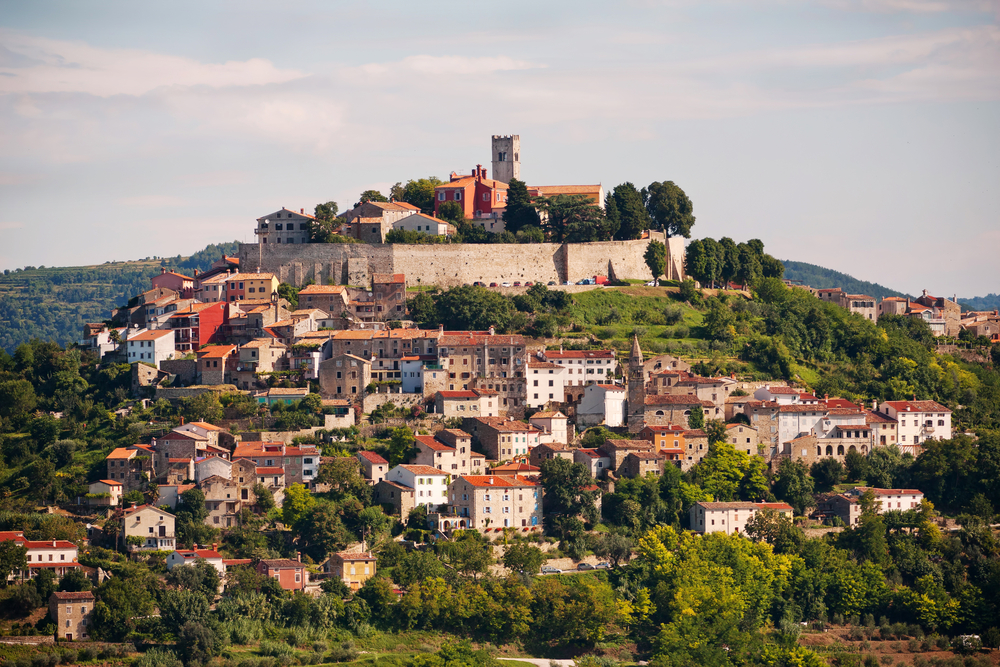
Where to Stay in Motovun?
For a budget but very comfortable option for travelers, consider Guest House Nena. You can walk to the center of Motovun, and the service and hospitality are top-notch, all at reasonable prices.
Cape Kamenjak
If you appreciate beautiful cliffs and marine nature, Cape Kamenjak is a must-visit for at least a few hours.
Cape Kamenjak and the eponymous nature park are located at the southernmost point of the Istrian peninsula. In the vicinity of Cape Kamenjak is the town of Premantura.
What to see? Incredibly beautiful coastal cliffs and caves line the 30 km coastline. There are beautiful biking and hiking trails passing by picturesque bays and beaches. Local beaches are considered the most beautiful in Istria.
For accommodation, I recommend the lovely Aparthotel Punta Blu in the resort town of Premantura. If there’s no availability, feel free to book something in the surrounding areas. One or two days will be sufficient, but you might find yourself lingering for a few more.

Umag
The coastal town of Umag is considered one of the most popular summer vacation spots, along with Rovinj or Poreč.
Umag boasts a beautiful old town and coastline, excellent beaches and coves nearby, and plenty of options for active recreation and excursions in the surroundings.

Where to Stay in Umag?
Hotel Sipar Plava Laguna—right by the sea, within walking distance of the old town, with breakfast included.
Apartments and Rooms PUNTA—excellent apartments near the sea, close to a natural park and the old town, offering one of the best price-to-quality ratios.
Hum
Hum is the smallest city in the world, and it’s worth visiting just for that fact. Hum is situated on a hill, with two historical streets, city walls, a church, and several beautiful guesthouses where you can spend the night and enjoy morning coffee with a view of the valley. There are a few shops with local delicacies and several picturesque courtyards that make you feel like you’ve stepped into the past.
Fun fact: Hum has a permanent population of about 30 people; we met one, aside from our apartment hosts.
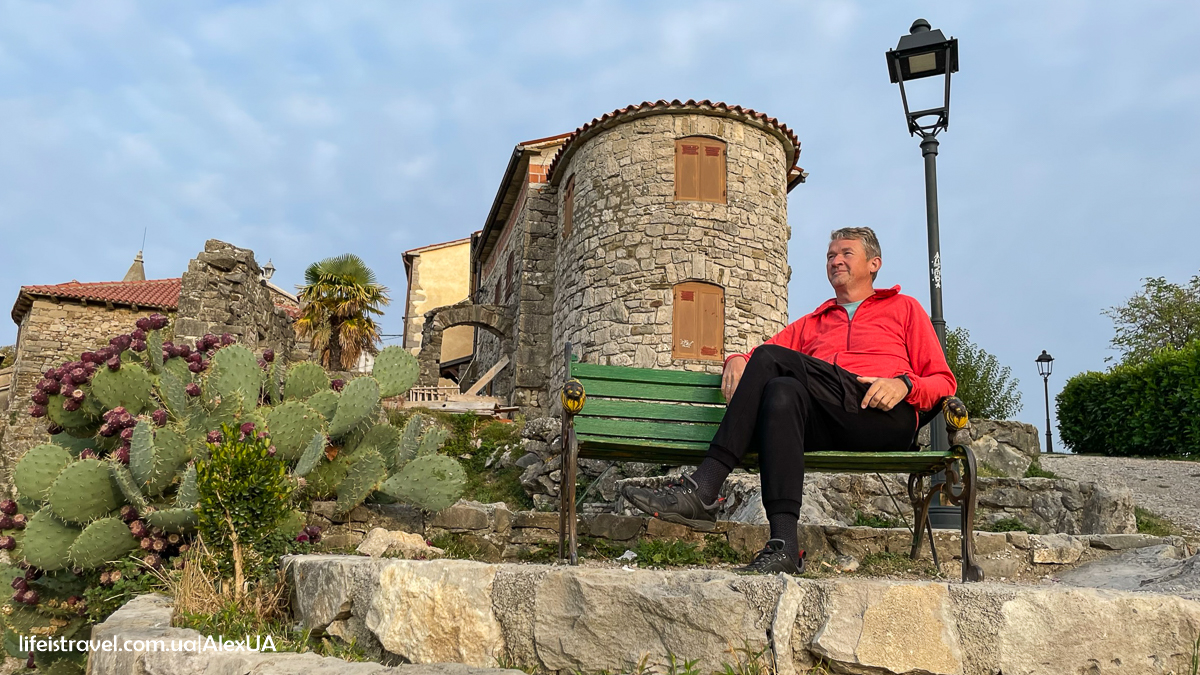
If you’re traveling to Istria by car from European countries, Hum is an excellent place for relaxation.
Recommended accommodation: Apartment HUM.
Vrsar
The town of Vrsar is another fantastic place on the western coast of the Istrian peninsula. As always, the main attraction is the medieval and very cozy old town on a hill. The highlight and backdrop of the city are the Church of St. Martin, with many old houses clustered around it.
Down below is the harbor and beautiful beaches.
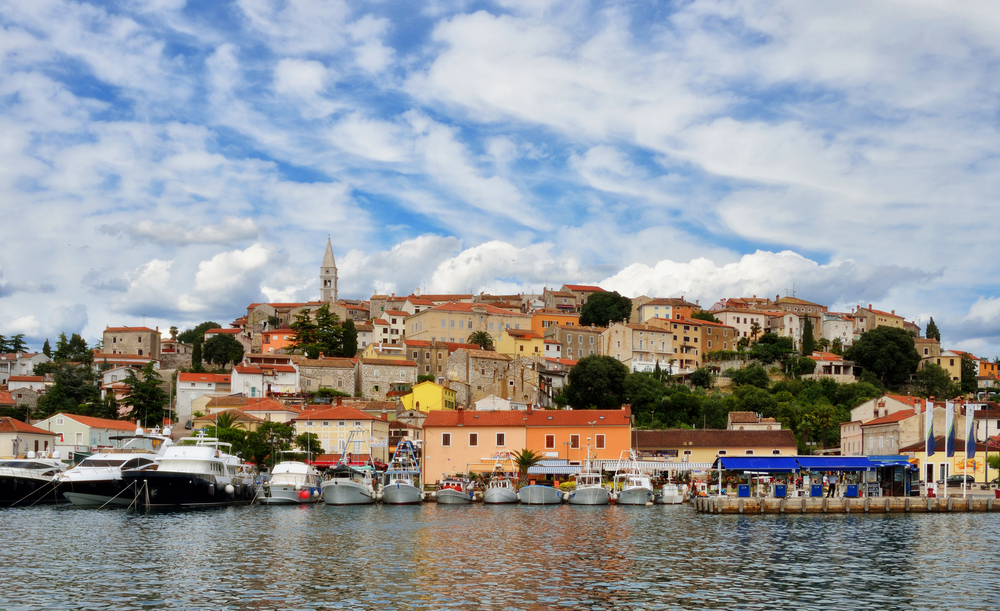
Where to Stay in Vrsar?
If you decide to spend your vacation in this quiet town, here are a few tried-and-true options to choose from:
- Maistra Select Belvedere Resort 5* — the best hotel in town, excellent location right on the beach, with pools, rooms with a fantastic sea view.
- Apartments Elvis 1299 — excellent budget accommodation near the sea and not far from the city center, offering one of the best price-to-quality ratios on the resort.
- Apartments Valentino — budget-friendly apartments with a terrace and spacious rooms. Not far from the sea and the old town, 10-15 minutes on foot. If the previous accommodation is unavailable, you can try this one.
Zarečki Krov Waterfall
If you want to diversify your seaside vacation, I recommend the Zarečki Krov Waterfall. It is located approximately in the center of the Istrian peninsula, equidistant from Rovinj, Vrsar, or Poreč. You should allocate a significant part of the day for a trip to the waterfall.
The waterfall is near the town of Pazin, with water falling from about 10 meters, creating a beautiful turquoise spectacle. While not as impressive as the waterfalls of Krka or Plitvice Lakes, it is still a worthwhile destination for a day trip if you seek variety.
You can swim in the waterfall, and there are picnic spots nearby, so you can bring food and have lunch in nature.
Entrance is free. Wear good shoes, as it can get a bit muddy. The ideal time to visit is a sunny day in autumn. During intense heat, there might be less water.
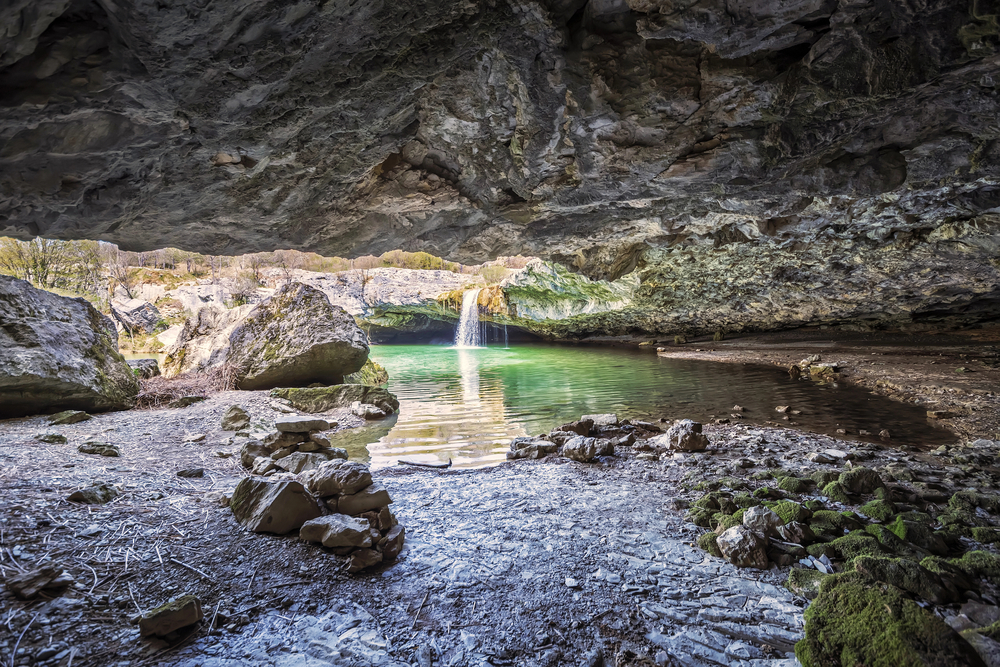
In the same trip, plan to visit the small Pazin Castle. There’s also a cool canyon nearby.
Novigrad
Novigrad is another romantic and beautiful place in the chain of coastal towns on the Istrian peninsula. The picturesque waterfront, Mandrac harbor, and the old town center, while familiar in Istria, are exceptionally beautiful. Architectural landmarks include the Church of St. Pelagius and the medieval city walls.
As everywhere in Istria, there are plenty of beautiful beaches near Novigrad, enhancing the overall picture. The city’s attractions, beaches, the waterfront, and the surrounding beauty make Novigrad an excellent place for relaxation.
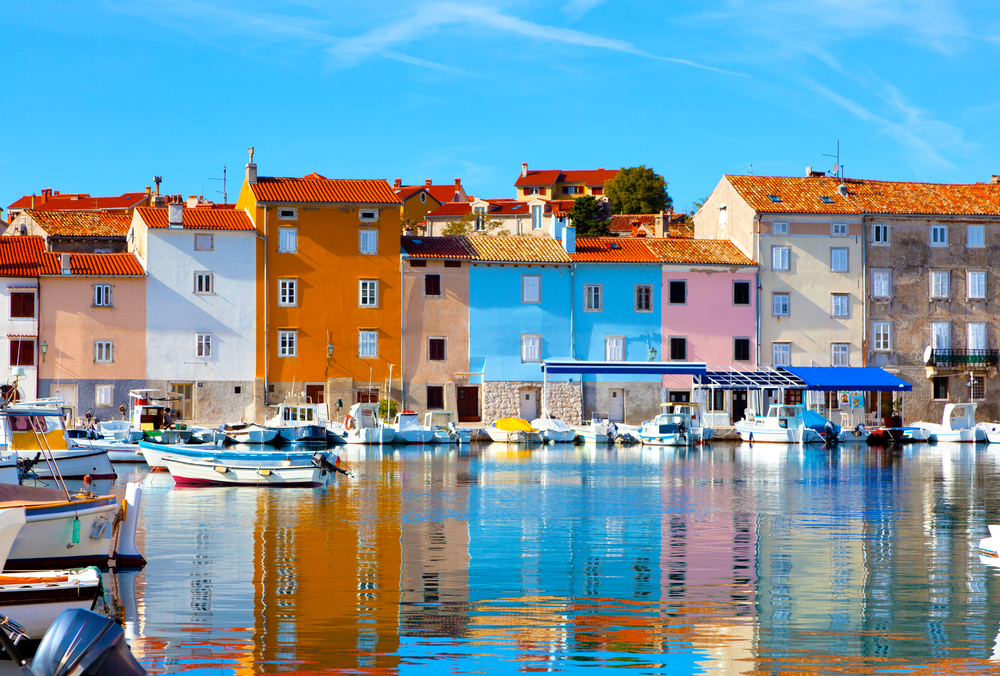
A very beautiful hotel to consider is Rivalmare Boutique Hotel, a small refined hotel near the sea and the old town. There are also many apartments for budget travelers.
Brijuni National Park
Croatia has dozens of magnificent islands, and Istria is no exception. A popular destination for day trips in Istria is the Brijuni National Park, located near the resort town of Fažana. It’s an archipelago of 14 islands protected by the state since 1983.
You can reach it by ferry from Fažana, and the ticket includes the entrance fee to the national park. In the park, there’s a local safari park with zebras and pheasants, a bird reserve in the south, and some archaeological sites. For active recreation, there’s a network of 24 km of bike paths.
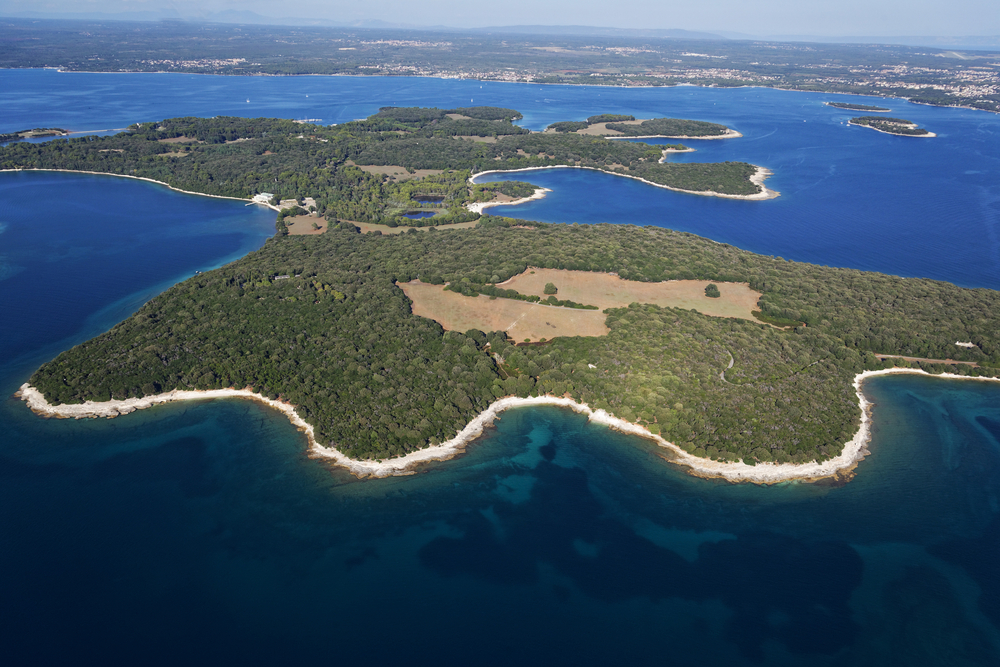
Labin
Labin is a typical Croatian town. Old center, artists, galleries, souvenir shops, and cafes in cozy alleys.
Visit Labin if you’re vacationing in Rabac, a city on the Istrian coast with a scattering of beautiful beaches. If time is limited, you can skip it or leave it for next time. Ideally, spend a couple of hours in Labin.
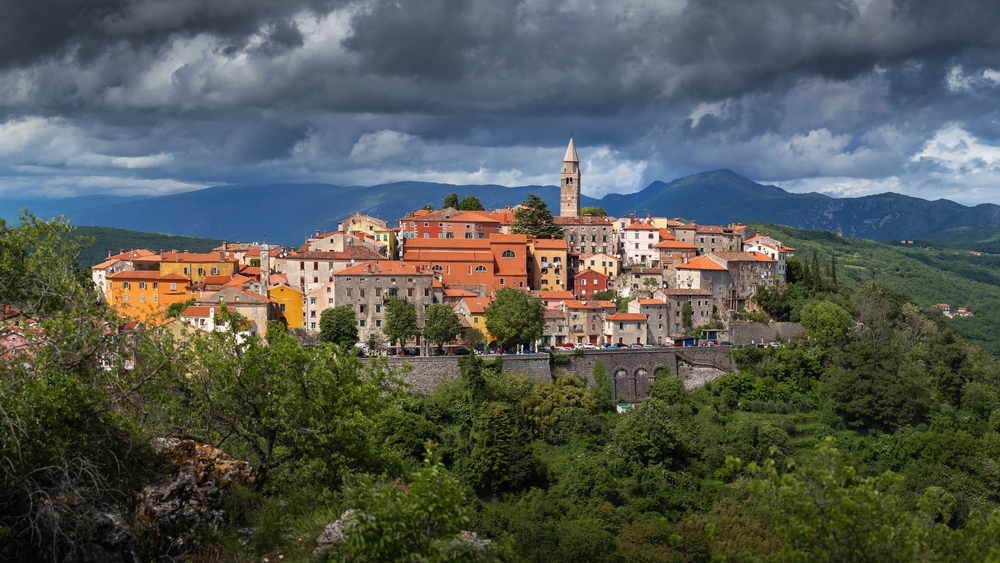
Baredine Cave
If you love underground spaces with stalactites, impressive halls, and cool stone formations, you should come here. The cave is 132 meters long, and tourists are shown five halls of the cave.
The cave opened in 1995 and is open for visits from April to October. The cave is located between the towns of Gedići and Nova Vas, and you can easily reach it by car from any city on the coast.
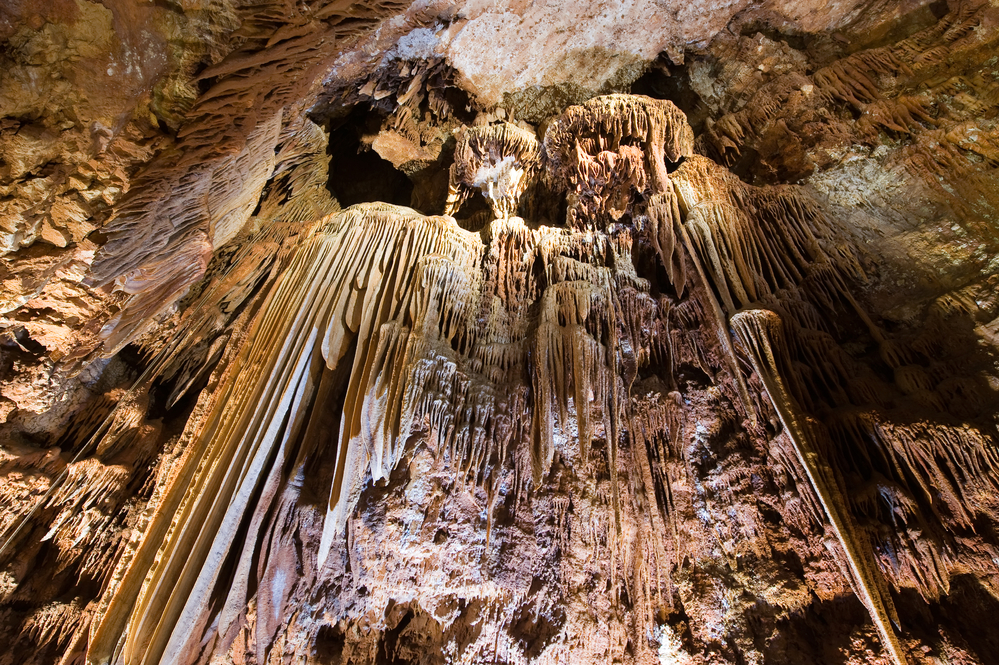
Lim Channel
Lim Channel, also called Lim Fjord, is located between the towns of Rovinj and Vrsar. The fjord is 11 km long, connecting the river valley and the sea, and boat rides along the channel are a popular activity.
We were satisfied with just looking at it from above. It’s well visible from the road along the sea. There are many local shops selling local olive oil, liqueurs, wines, olives, and honey nearby.
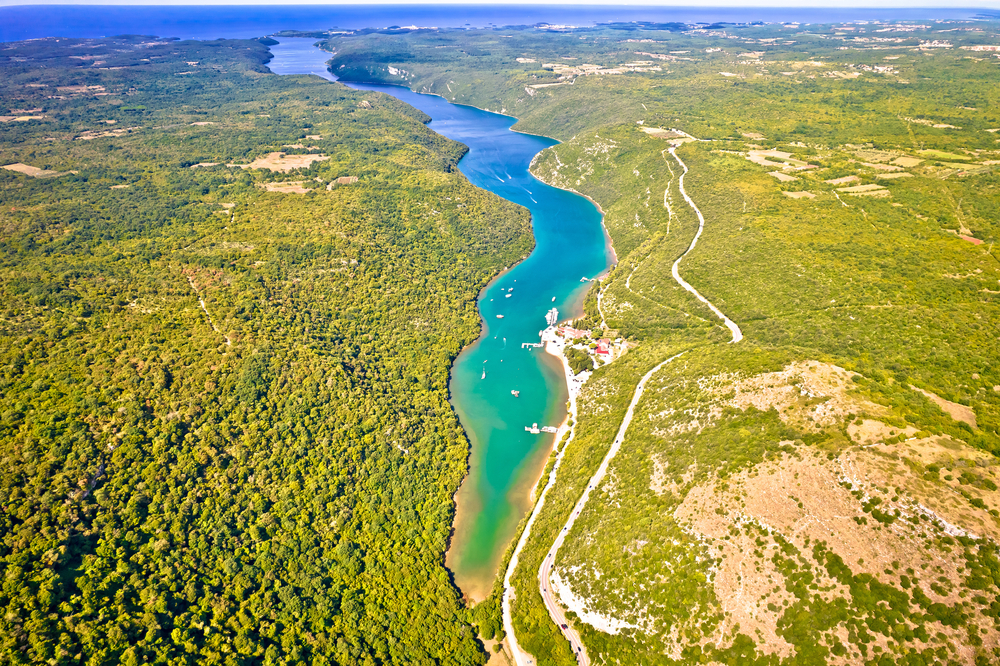
Bale
Bale is a very pleasant medieval town in Istria, quite close to the coast.
It’s located on a low hill, 142 meters above sea level. The city is built around the town hall, distinguished by its spire, and the Church of the Holy Spirit. It’s an excellent place for photographers, with many beautiful locations in the city.
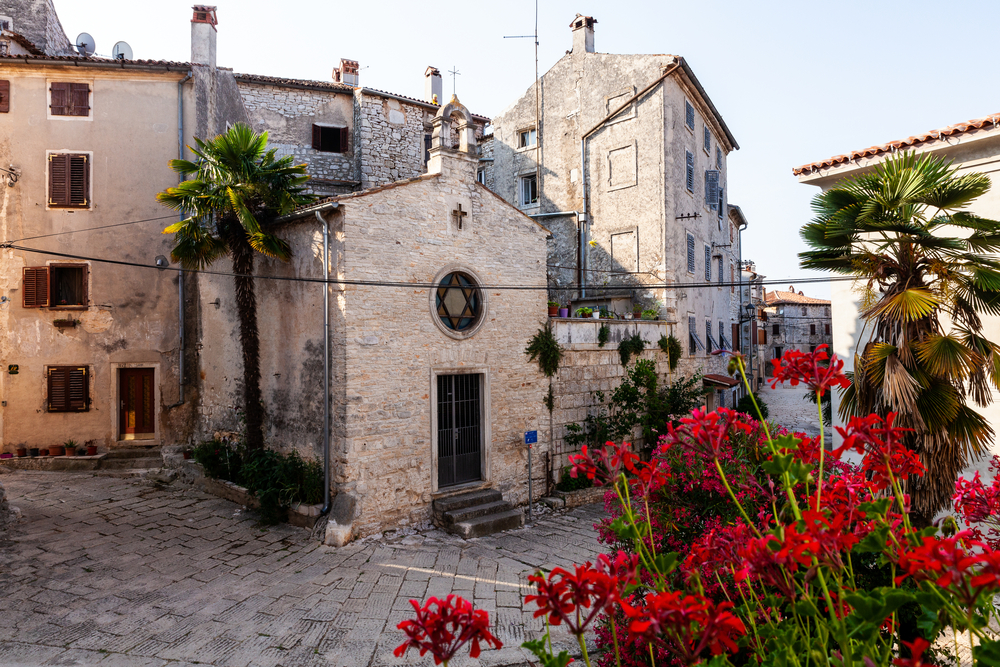
If you find yourself in this town during lunchtime, visit the Meneghetti restaurant. It’s a place where luxury, a friendly atmosphere, and local cuisine coexist harmoniously. It’s more expensive than a roadside cafe, but overall, the prices are reasonable. Alternatively, you can just have a glass of wine with something tasty.
How Much Time to Plan for Vacation
If you want to see everything, you need a minimum of 2 weeks, considering that you should spend more than one day in cities like Rovinj or Pula.
If you want to see the most interesting things, 7-10 days are sufficient.
If the goal is a seaside vacation and excursions to beautiful places, any period is suitable. In this case, you can just leave some for the next time. I have no doubt that you will want to come again.
Despite the greatness and well-deserved popularity of Dubrovnik, I believe that Istria will offer even more impressions and a higher quality of vacation.
Where to Buy Air Tickets to Croatia
We buy all plane tickets on Aviasales—loved for good prices, a choice of destinations, and a user-friendly website. Reliable, of course.